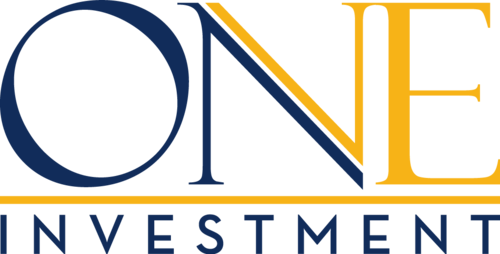Five Risk Management Trends to Follow in 2022
By Hind Faiad
Marketing Coordinator, ClearRisk
In 2021, all industries are facing pressures to adapt and respond to a growing list of emerging risks and disasters. The last year has seen strides to amplify technology use, broaden the talent pool, and adopt innovative, data-driven, risk mitigation strategies. The 2022 risk landscape is changing faster than most organizations can keep up with, leaving executives and risk managers with the question: “How can I make my organization more resilient?”
Awareness of risk management trends is critical for businesses to be prepared for anything that comes their way. This article compiles information from a combination of resources, highlighting five increasingly relevant trends that executives and risk professionals should follow in 2022 to prepare for emerging risks, anticipate unplanned costs, and make strategic decisions.
The five trends discussed in this blog are:
- COVID-19 and the Omicron variant
- The growing need for cyber security
- Supply chain crisis
- Environmental sustainability
- Talent Management and the Great Resignation
COVID-19 and the Omicron Variant
“Pandemic or endemic?” The contagious Omicron variant, which infects even fully vaccinated individuals, warns that we must learn to coexist with a virus that isn’t going away anytime soon.
Omicron is so mutated that vaccinations are not sufficient to protect from the new variant alone. The ECDC published a risk assessment in late 2021, recommending a rapid reintroduction of non pharmaceutical interventions, such as masking and telework, to reduce transmission and alleviate some burden on the healthcare system..png)
Despite this, vaccinations are still a key component of the defense against COVID-19. Research demonstrates that those who are vaccinated show significantly lower rates of serious infections and hospitalization. Data from the ECDC suggests that half a million lives have been saved by the vaccine so far, encouraging countries to ramp up full vaccination and booster shot efforts.
Technology plays a major role in the success of all pandemic mitigation efforts in 2022, and having a solution in place is key to long term success. The onus is not only on regulators, but also on businesses to protect their employees and adjacent communities. Organizations need the knowledge, resources, and tools to equip themselves for any employee or operations related disruptions.
Data-driven pandemic management solutions like ClearRisk track the spread of the virus and inform the appropriate response even at the height of a severe pandemic wave. Automated data collection coupled with graphical dashboard reporting provides insights on total exposures, exposure dates, confirmed cases, symptoms, vaccinations, workdays lost and more.
The growing need for cybersecurity
Remote work environments and evolving technology contribute to a growing opportunity for cyber criminals. Organizations should prioritize cyber response plans to reduce downtime and prevent inflated remediation costs.
The USA has seen a 300% increase in reported cybercrimes since the beginning of the pandemic. According to Canadian Underwriter, over 56% of employees working remotely are using personal computers, with more than 25% who have issues with spotty wifi, limiting antivirus efficacy. The number of access points for cybercriminals to attack is increasing, with the “Internet of Things” (IOT) forecasted to reach 18 billion interconnected devices in 2022. Furthermore, adversarial AI is being used to send malicious datasets into organizational networks without being flagged as dangerous by their security solutions.
The emergence of more sophisticated cybercrime operations like Ransomware-as-a-Service, shows that threat actors are joining forces to maximize success from digital extortion. In 2022, cybercriminals will continue to form robust working relationships, warranting better coordination from the cybersecurity industry to combat these threats. Experts predict that 2022 will witness increased government regulation and investment in cybersecurity to protect mission critical functions like elections, healthcare, and energy. Large organizations will up their investment in cybersecurity, leaving underfunded and understaffed small to medium sized businesses the most vulnerable to attackers.
Among growing concerns for organizations is the ransomware industry that was worth $14 billion in 2021. Episode one of the Resilient Journey Podcast features insights from industry experts on what really happens during a ransomware attack. The truth is that the ransom is just the tip of the iceberg compared to disruption and remediation costs, with the average downtime for security events exceeding 3 weeks. The insurance industry is struggling to properly underwrite the exposure due to rising demand for cyber coverage, resulting from increased frequency and severity of data breaches. As access to coverage becomes more challenging and expensive in 2022 and beyond, organizations must prioritize building their cybersecurity response, and even that will not eliminate the probability of cybersecurity events.
Supply Chain Crisis
Supply chains are highly vulnerable to cyber attacks due to their interconnected nature, and it is only as strong as its digital weakest link. The growing e-commerce industry is at risk as the demand for shipping and home delivery will exceed capacity to deliver.
The average supply chain disruption costs an organization $1.1 million, not to mention the reputational risks and the impact on customer loyalty. If the supply chain crisis has not yet impacted your business, it is impacting your vendors and customers. Third party contracts with partners in your supply chain may be the thing a hacker uses to infiltrate your organization.
The pandemic has catalyzed notable growth in the e-commerce sector, but can our supply chains keep up with demand? There is a growing risk of understaffing, due to talent moving on to better opportunities. Businesses may also try to prevent inventory shortages by ordering larger quantities, consequently adding pressure on manufacturers to meet this increased demand. Businesses adopting the latest logistics and e-commerce tools will gain visibility into their supply chain risks, and increase their ability to handle this crisis profitably.
Common insurance policies will typically not respond to supply chain disruption, and businesses should source specialized supply-chain insurance policies. One option is “Contingent Business Interruption” (CBI) insurance, which provides compensation when a partner that you depend on is disrupted. However CBI coverage has limitations, and a business may need broader supply chain coverage for certain exposures outside of their CBI policy.
Insurance is not the only option when mitigating supply chain risk. Business leaders should implement online-cloud based technologies that link between supply chain partners, and leverage data insights to analyze potential vulnerabilities. Furthermore, it is important to conduct a risk assessment and respond to potential exposures in your business continuity plan (BCP), while also reaching out to alternative partners and vendors.
Environmental Sustainability
Consequences of climate change impact organizations globally. Massive strides in sustainability and risk management will take place in an attempt to prevent future disasters and protect the health and longevity of our planet.
Weather related disasters caused some of the all-time highest natural disaster losses in the United States. Hurricane Ida was the costliest disaster with $65 billion in losses. Natural disasters destroyed $280 billion worth of assets in 2021, $120 billion of which were insured. Around 57% of losses globally were not insured, with this gap being even higher for countries in the developing world. These trends are comparable with recent years, and we can expect rising losses from extreme weather events.
With goals to reach net-zero from the 2021 Climate Change Conference in Glasgow (COP26), sustainability is in the spotlight for 2022. The Glasgow Climate Pact is adopted by 197 countries, and emphasizes the urgency of action to achieve their long term global goals. The ongoing threat of COVID-19 is also catalyzing the shift of society towards more sustainable ways of living. Work from home is likely to continue as it is easier on employees and reduces emissions by eliminating the need to commute. Other sustainability trends include pushes for renewable power, carbon offsetting, stricter regulations, rise in ESG investments, and adoption of data driven technologies.
The American Meteorological Society categorizes four approaches to climate change risk management: mitigation, adaptation, geo-engineering, and knowledge-base expansion. These strategies are not mutually exclusive, as they all play a role in a comprehensive climate risk management plan. From an insurance perspective, sustainability has long been linked with profitable growth, encouraging insurers to build sustainability value in their business models and product portfolios. As regulation surrounding climate becomes stricter, a highly discussed policy option is adding a price to greenhouse gas emission, broadly incentivizing reduced emissions.
Talent Management and the Great Resignation
Employees are leaving their jobs in droves, as the pandemic-fueled Great Resignation continues in 2022. Organizations face pressures to manage their talent and prevent employees from seeking better opportunities elsewhere.
The Q3 2021 US Job Market Report demonstrates that this trend is here to stay. 22% of job seekers reported quitting their previous jobs, and 73% of current employees report actively thinking about quitting their jobs. The pandemic has caused the working class to reconsider their life priorities and seriously consider other jobs.
McKinsey and Company conducted a series of surveys on employee attitudes about the future of remote work. Data revealed that employees are feeling anxious and burned out, often due to a lack of communication from employers about post COVID-19 work arrangements. While many employers are embracing hybrid work practices, employees want to know about policies and expectations in the post pandemic world.
Remote work provides the working class with many opportunities that pay the same or better. Employees who used to deal with long commutes are likely to change jobs for the flexibility of working remotely. Organizations planning to return to fully onsite work in 2022 will likely face challenges in recruiting and retaining talent. Moreover, automation is changing the way people do their jobs, and the most impacted are employees in low wage brackets. Displaced low wage workers are challenged to expand their skill set to meet growing demands for high wage jobs.
In 2022, organizations need to seriously consider their talent strategy. Ultimately, employees want more flexibility, clear communication, and to feel included and valued by their employer. Companies should focus on re-skilling their employees to meet their talent demand instead of hiring externally, which can be up to 10 times more costly. Embracing automation and AI could also be beneficial to limit reliance on human labor. Finally, diversity, equity and inclusion (DEI) is crucial in 2022, with 56% of employees being more likely to work at a company that prioritizes it.
Conclusion
The global risk landscape is evolving rapidly in 2022, and awareness of trends is the first step to understanding what your organization needs to be prepared for. While it’s impossible to predict how long these trends will stay around, we can assume at the very least that they will have a lasting impact on the way organizations are operating. Whether it’s a pandemic, cyber attacks, natural disasters, staffing shortages, or supply chain disruptions, businesses need to focus on operational resilience to defend themselves against the risks.
An important trend is the adoption of more robust and data driven risk management tools to provide visibility into risks and exposures. Data is key in 2022 when dealing with insurers, investors, board members, and other stakeholders in your business. These risks are escalating and impacting businesses everyday, and those with information will be the most prepared to face these challenges. It is not only critical to act fast, but to continually monitor and adapt your continuity plans to reflect the most urgent threats to your business.





